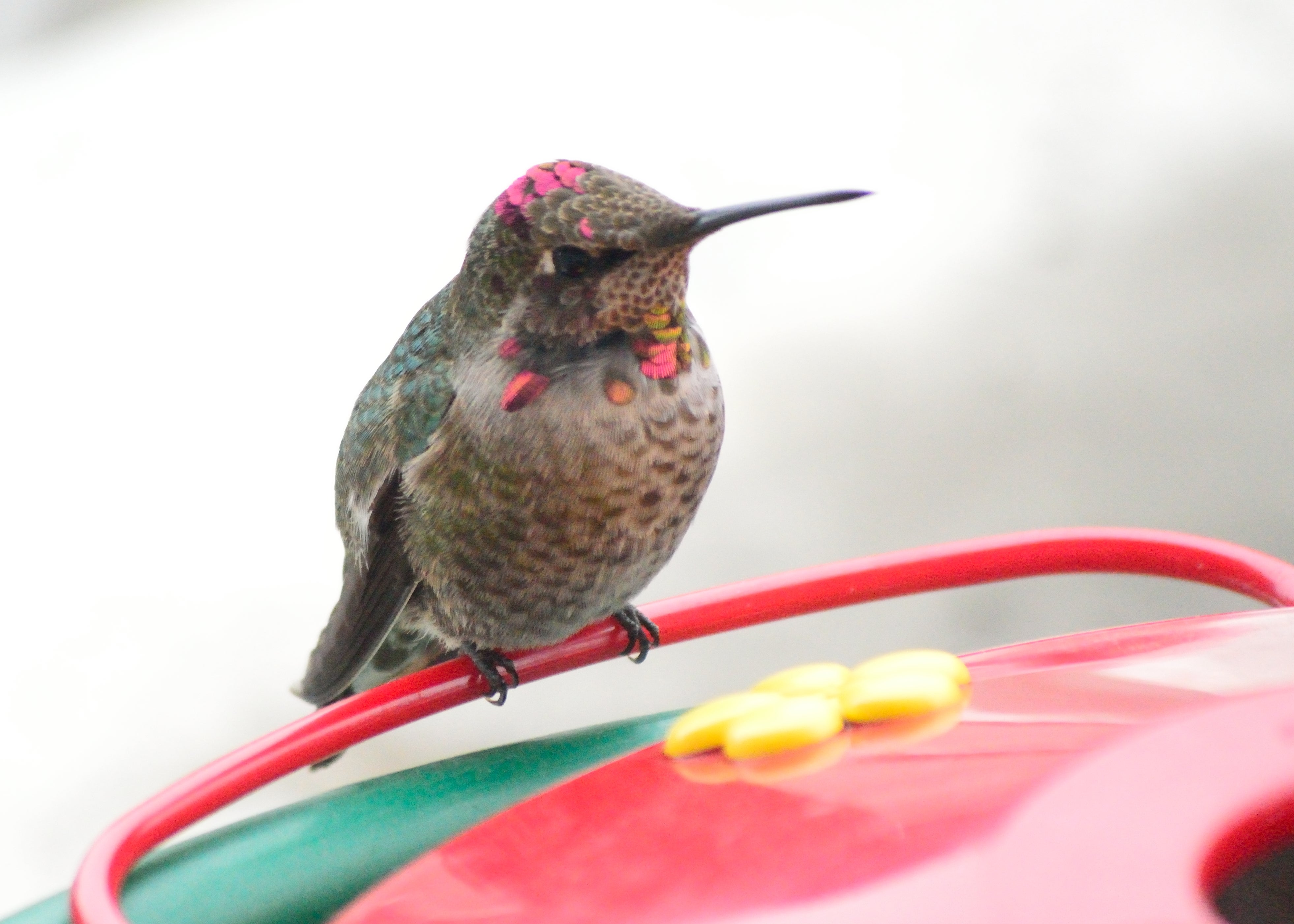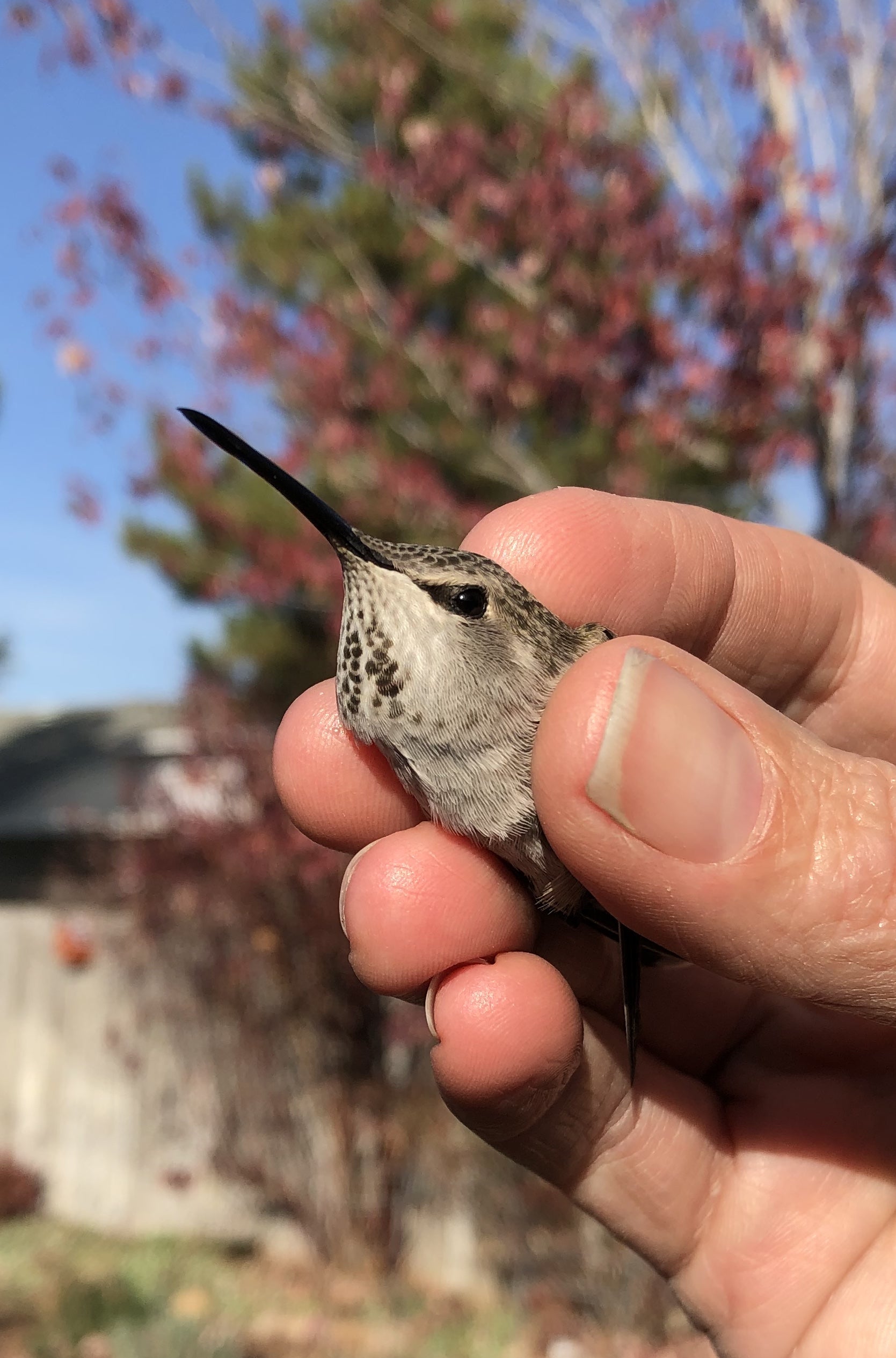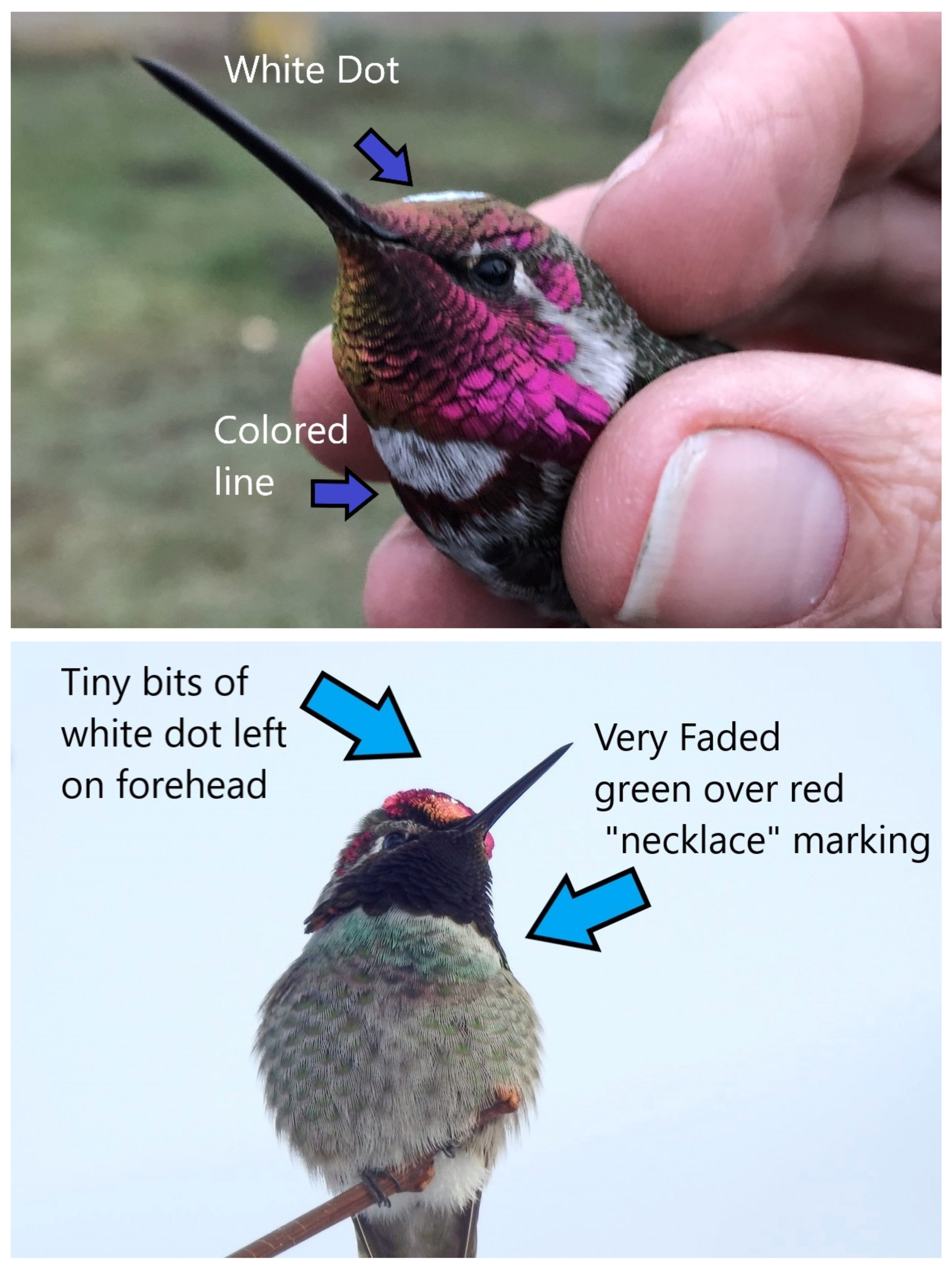By: Jessica Pollock
Way back in 2015, IBO’s Education and Outreach Director Heidi had a winter hummingbird visiting her backyard, and so did another person in her same neighborhood. Heidi suggested we consider starting a banding program to document the movements of these winter hummingbirds and what a good idea it was!

Since 2015, we’ve banded and color-marked 50 Anna’s Hummingbirds spending their winters in the Treasure Valley and the West Central Mountains (and have documented between 40 and 62 across the state every subsequent winter). We give each hummingbird a unique color-mark which allows us and homeowners to re-sight these birds as unique individuals. This proves quite useful for documenting their numbers. In a single winter morning in 2016, color-marking allowed us to identify 9 uniquely marked individual hummingbirds in a homeowners yard when feeder observations alone suggested only 2-3 individuals! The color-marking showed us that there were certainly more winter hummingbirds in the valley than we had realized!
Another fascinating realization is that many of the hummingbirds visiting us in winter have been here before!
We have documented six instances of banded Anna’s Hummingbirds returning to the same site in successive winters! Even when they disappear for the summer (we don’t fully know where they all go), at least 6 of these birds came right back to the same place the following winter! In biology we call this “site fidelity” and these are the first records of documented winter site fidelity for the Anna’s Hummingbird in Idaho.
One of our favorite examples is an adult female that we banded on a cold November 9th morning in 2017. The following winter, we recaptured her in the same yard, at the same feeder, on the exact same day (November 9th, 2018)! Talk about creatures of habit!

We just got word that our manuscript titled “Monitoring through community science: Anna’s Hummingbird winter range expansion into Idaho” has been accepted for publication!
We’ve summarized the winter range expansion into Idaho since the first record in 1976 into one comprehensive paper and are proud that this manuscript will be published in the scientific journal Western Birds in early 2021!
If you are one of the lucky ones to have a winter hummingbird visitor, consider purchasing a heated feeder so the nectar stays thawed day and night. Pre-dawn is the most critical time for hummingbirds to eat and refuel after fasting all night long. Having a thawed nectar source available 30 minutes before sunrise is critical. So if you prefer not to wake up that early to swap feeders (can’t blame you!), then purchasing a heated feeder is the way to go. They are available online and in many bird feeder supply stores.
Do you want to become a Community Scientist and take part in this fascinating research? It’s fun and easy! Here’s how…
Please send us your report of any winter observations of hummingbirds! We would also like to know if you have seen any visitors with a white dot on the head or a colored “necklace” across the chest. It might be obvious, or perhaps more subtle in color. All markings are temporary and begin to disappear during the damp weather and as the bird begins molting. The sharpie marker “necklace” is a colored line that extends across the chest (not to be confused with the color of the gorget, or throat feathers of the bird).

Still have more questions about these birds? Check out our winter hummingbird page to learn more about these incredible hummingbirds, our research, and how to keep your feeders heated.
This article is part of our 2020 end of the year newsletter! View the full newsletter here, or navigate to “older posts” to read the next article.
Make sure you don’t miss out! Sign up to get our annual email update.